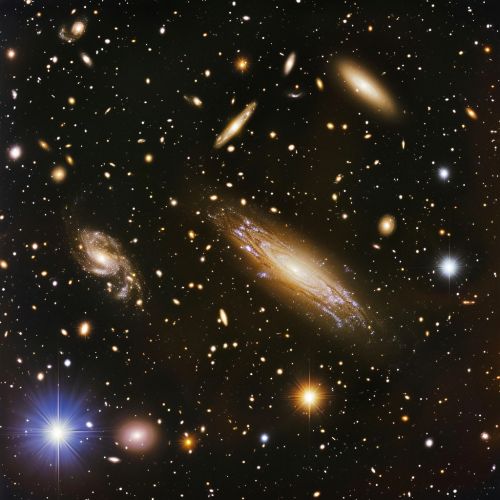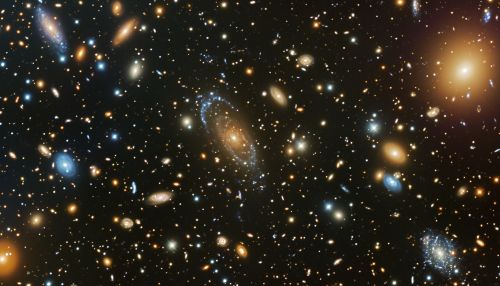Hubble constant
Introduction
The Hubble constant (H_0) is a key parameter in physical cosmology that quantifies the rate at which the universe is expanding. Named after the American astronomer Edwin Hubble, who first provided empirical evidence for the expansion of the universe, the Hubble constant is a measure of the current rate of this expansion.


Historical Background
In the early 20th century, the prevailing view was that the universe was static and unchanging. However, this view was challenged by Edwin Hubble's observations of distant galaxies in the 1920s. Hubble discovered a correlation between the redshift of light from these galaxies and their distance from Earth, a relationship now known as Hubble's Law. This discovery provided the first empirical evidence for the expansion of the universe and led to the formulation of the Hubble constant.
Definition and Measurement
The Hubble constant is defined as the ratio of the recessional velocity of a galaxy to its distance from the observer. The recessional velocity is the speed at which a galaxy is moving away from the observer due to the expansion of the universe, and is typically measured using Doppler shift of the galaxy's spectral lines. The distance to the galaxy can be determined using various methods, such as Cepheid variables, Type Ia supernovae, or redshift measurements.
The value of the Hubble constant has been a subject of ongoing debate in the scientific community, with different methods of measurement yielding different results. This discrepancy, known as the "Hubble tension", is one of the major unsolved problems in cosmology.
Significance in Cosmology
The Hubble constant is a crucial parameter in the Big Bang model of cosmology. It sets the scale for the age and size of the universe, and influences the predicted abundance of cosmic microwave background radiation, primordial nucleosynthesis, and the formation of large-scale structure in the universe.
Furthermore, the Hubble constant plays a key role in determining the geometry of the universe. Depending on its value, the universe could be flat, open, or closed, each with distinct implications for the ultimate fate of the universe.
Current Research and Future Directions
Current research in cosmology is focused on resolving the Hubble tension, with efforts directed towards refining the methods of measuring the Hubble constant and exploring new physics that could explain the discrepancy. Future space missions, such as the James Webb Space Telescope, are expected to provide more accurate measurements of the Hubble constant and shed light on this fundamental cosmological problem.
